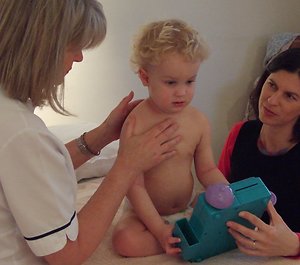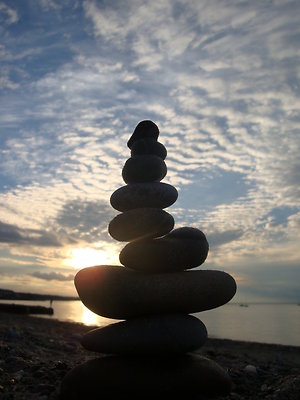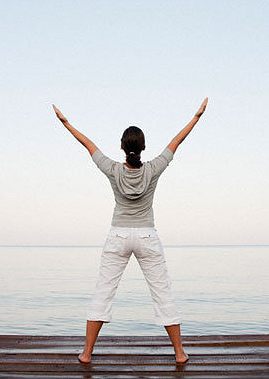1. What can osteopathy help with?
Patients consult an osteopath for a variety of reasons: to relieve pain, to return to their normal daily activities after injury, or because they are worried about their health. Osteopaths are primary healthcare professionals and can advise on a wide range of health concerns, including referral to other health professionals when appropriate.
Early intervention is key. Whether you are suffering from a long standing, chronic condition, a new problem or occasional discomfort, taking advice and getting preventative treatment can be a worthwhile investment in your long term health.
In the same way that many people visit their dentist to reduce the likelihood of requiring a filling, some patients choose to have occasional check-ups with an osteopath to allow potential problems to be detected and treated before they become an issue.
Have a look at What conditions can Osteopathy help but if you can't see your problem listed please give me a ring to discuss whether I might be able to help you.
2. Do you treat babies and children?
Yes indeed! I've had the pleasure of treating babies and children for 40 years in private practice in addition to volunteering at the Osteopathic Centre for Children (OCC) in London in the early 90's and, at a branch of the OCC in Manchester 10 years ago. I've studied Paediatrics with the Sutherland Cranial College of which I am a member (MSCCO). I'm trained to screen for medical conditions and will refer babies and children onto a relevant health care practitioner if required, for example, GP or Health Visitor.
Babies and children are treated using Cranial Osteopathy. Initially I take a detailed case history covering your concerns about your child's health as well as asking you about his or her general health and development. Examination follows which includes observation and, in some cases, developmental tests as well as gentle physical examination. If treatment is found to be appropriate, then the cranial osteopathic techniques used are safe, gentle and non-manipulative. The soothing and calming nature of the treatment can make children feel more relaxed.
Before Covid-19, the practice room had a variety of toys to help your child feel at home but, unfortunately, the risk of potential contagion means that toys are no longer available. Please feel free to bring anything with you which will help your child to feel content such as a favourite toy, a dummy or a snack. Toys should be sterilised before coming into the practice please.
If there is anything you would rather discuss when your child isn't present then please ring me beforehand.
"As the twig is bent so doth the tree incline" - AT Still (Founder of Osteopathy)
3. How does osteopathy work?
There are a range of treatment techniques used by osteopaths. Soft tissue massage to release tight muscles appears to work by sending messages to the nervous system to reset the resting tone of the muscle fibres. Articulation and stretch of joints has a similar influence on the nerves that respond to joint capsule position. Osteopathic techniques also aim to improve blood flow to stiff muscles and joints and reduce swelling where there is inflammation.
Observing cranial treatment can be compared to watching someone reading a book. From the outside nothing appears to be happening but, if you are the one reading the book you are transported into a rich world of structure, colour, depth and emotion. As you continue to read, the story unfolds.
In a cranial treatment, an osteopath is deeply connected to the inner world of living anatomy and physiology. Listening carefully the body can tell the story of what has happened to it, what trauma (emotional or physical) it has suffered and, how it is trying to cope with the legacy of these traumas.
In treatment the osteopath is guided by the tissues to support the re-balancing or release of areas of dysfunction. The body has an amazing ability to heal itself and maintain its own physiology in a state of health and uses the re-balancing during osteopathic treatment to re-establish healthy physiology
4. How does osteopathy differ from physiotherapy and chiropractic?
Osteopaths, chiropractors and physiotherapists are all regulated health professions, requiring practitioners to train to degree level, and then to maintain their clinical skills and professional standards. Whilst all three techniques involve manual therapy, they are all based on very different schools of thought and their approach to patients is different.
The body, as we all know, has the capability to repair itself, and osteopathy is based on this principle. As primary healthcare professionals, osteopaths have a broad base of training, allowing them to diagnose, treat and advise upon a wide range of conditions. An osteopath will work to help your body return to normal function, using techniques such as movement, stretching, manipulation or deep tissue massage to help achieve the best outcome.
An osteopath will work with all of the muscles, joints and structures of the body, including the spine. Osteopaths use gentle, focused techniques to mobilise the spine and other structures and will continuously examine your body monitoring changes throughout treatment. A chiropractor will tend to focus on the spinal joints and use a quite different method of manipulation.
Osteopaths tend to use a more hands-on and individualised approach to assessing and treating patients compared to physiotherapists. Osteopaths will seek to understand their patient in the context of their lifestyle, firstly by taking a full case history, and then using a combination of skilled observation and palpation to feel how well the body, including the muscles and joints, is functioning. These all form an intrinsic part of developing a personalised treatment plan. Some osteopaths specialise in many of the same areas as physiotherapists including breathing mechanics, rehabilitation and sports injuries.
Different practitioners within each of the three disciplines vary in their treatment approaches and post qualification training, and may specialise in the treatment of specific patient groups or conditions. When seeking treatment you should discuss your symptoms and concerns with me, and be sure that my skills and treatment style will suit you.
5. How many treatments will I need and how much will it cost?
Osteopaths set their own fees, which vary depending on a number of things such as how long the appointment is and whether specialist knowledge or techniques are recommended. Also the number of treatments can vary, with more severe or complex conditions needing more appointments.
My fees are:-
Expectant/post natal woman New patient.... £60.00
Expectant/postnatal treatment ...................£55.00
Baby/Child New Patient..........£55.00
Baby/Child treatment..............£50.00
I should be able to give you an indication of how many treatments you’ll need when I examine you and make a diagnosis. I won’t ask you to book appointments that you don’t need.
6. Will I have to undress?
To make a diagnosis and treatment, it is usual for an osteopath to ask you to remove clothing from the area being examined and treated. This may mean undressing down to underwear. I will explain how much clothing it is necessary to remove and then leave you to undress in private. If you are uncomfortable undressing to your underwear it may be possible to examine and treat you while you are wearing shorts or a t-shirt. Please discuss this with me.
7. Does osteopathic treatment hurt?
Osteopathic treatment is usually very gentle, but manipulating, massaging or stretching an injured area may be uncomfortable. I will explain what you are likely to feel and will stop if you tell me that the treatment is causing you too much pain.
8. Will I feel worse or better straight after treatment?
Some patients treated by an osteopath will experience some localised soreness in the area treated, which will usually go away within two days and can be relieved with over-the-counter painkillers. If your discomfort persists, please contact me for advice.
9. Who can attend with the child patient?
Children under 16 should always be accompanied by a parent or guardian throughout treatment. In order to help the child relax it is best if brothers or sisters are not brought along to the practice.
Useful Links


